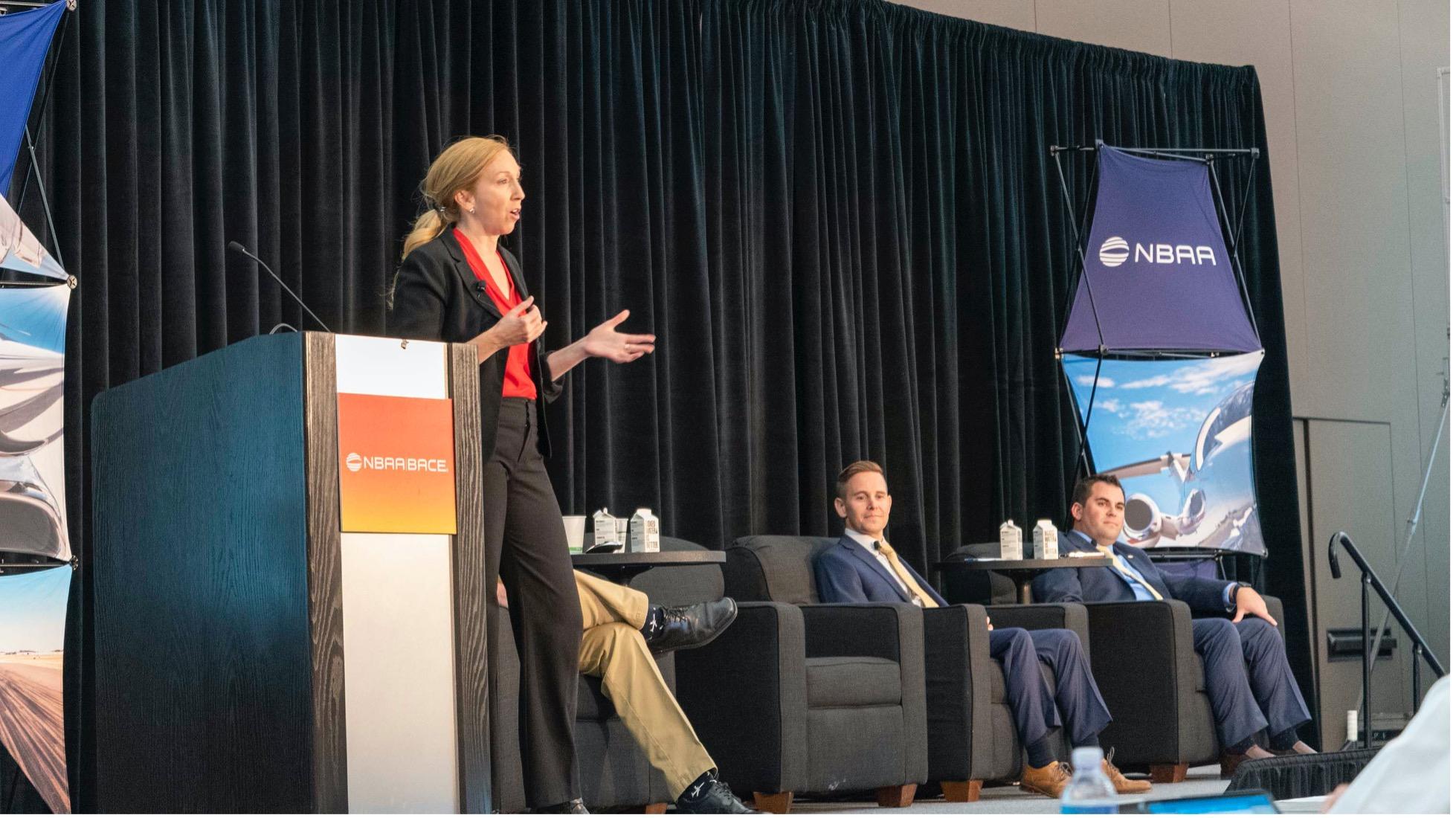
The opening session of the Small Operator Symposium held Oct. 11 featured a startling call to action from Dave Keys, chair of the NBAA Small Flight Department Subcommittee. He noted that while the Part 121 airline world has had a remarkable decade-and-a-half of declining accident rates, we in general aviation are coming off a very bad year. Keys looked at the audience with this common sense—but jarring—demand: “We need to stop crashing aircraft.”
Several speakers highlighted that a common complaint from small operators, those with a single aircraft and one or two pilots, is that safety management systems (SMS) are easy enough for large operators, like airlines. But with just a few people, these safety programs are out of reach to the small operator. Not true!
Erika Armstrong, pilot and vice president of aviation business development at the Advanced Aircrew Academy, said a safety program can be as simple as a one-page policy that says, “When it comes to safety, the pilot is always going to be right.” Several speakers echoed that, saying you don’t have to start with a 100-page SMS program, you just need to start with standard operating procedures (SOP) and get everyone to buy in. But how?
Keys noted that even if you don’t think you have SOPs, the way you fly day to day are your SOPs. That can be as simple as an agreement between pilots on how things are done, or much more robust. But having them printed lets everyone know what is expected and can be especially helpful to indoctrinate new or contract pilots.
Joe Samudovsky, a Citation XLS captain and member of the Small Flight Department Subcommittee, pointed out the value of briefings before and after the flight. He advocated the AWARE format for briefings before the flight: you cover the [A]irplane, the [W]eather, the [A]irports, the [R]oute, and the [E]nvironment. He said his Small Flight Department especially benefited from a post-flight discussion that begins with “What’s the DEAL?” The briefs begin with discussion about what happened during [D]eparture, [E]n route, and [A]rrival, and includes any [L]ogbook considerations. Samudovsky said DEAL discussions have helped his flight department resolve issues and encouraged an environment where pilots want to improve.
Armstrong likened a safety culture to a cult, the first four letters in culture. A cult needs four things. First, a cult needs a leader. Second, a cult has a philosophy or idea. Third, everybody needs to be indoctrinated. Finally, everyone must live by the philosophy. And that tied nicely into Keys’ opening remarks. He asked the audience to look into a mirror and ask a few questions. Is safety in your DNA? Are you open to outside input? Are you willing to listen to others in your flight department?
It was a good start for the Small Operator Symposium, and offered lessons for pilots from flight departments of any size.
